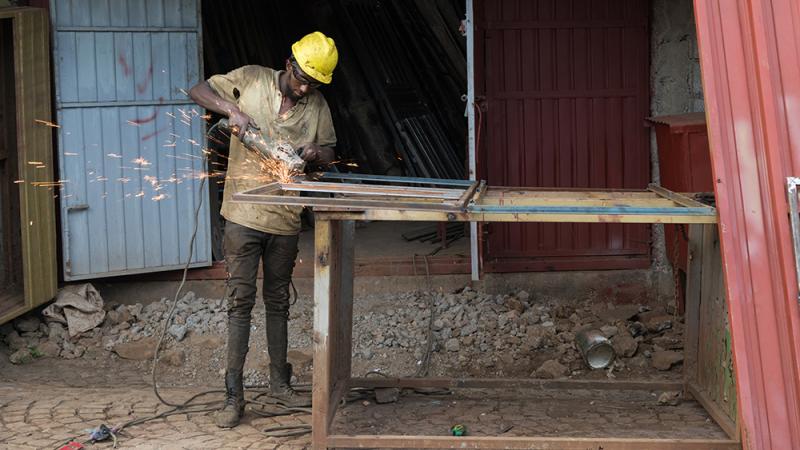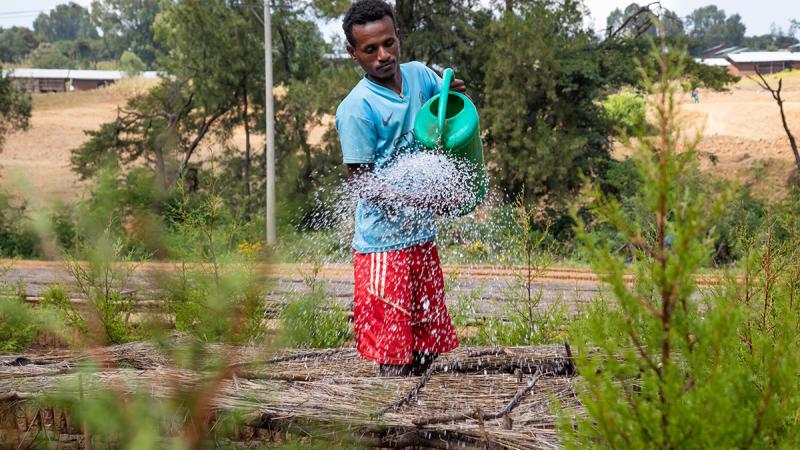Breadcrumb
Poverty dynamics.
The data reveals that from 2002 to 2016, there was an overall increase in household wealth and reduced poverty measured in a number of dimensions, including household wealth, consumption measures, health and nutrition, education, and access to safe water and sanitation.
There was been a significant reduction in numbers of severely poor households, and a smaller reduction of moderately poor households. Improvements were greater among the poor households and in rural areas, indicating that the poverty gap was reduced, both within areas and between urban and rural areas. Nevertheless, a significant number of households have remained persistently in poverty, and a few have fallen into poverty during the course of the study.
The severely poor households remain concentrated in rural areas. Factors associated with poverty include: larger numbers of household dependents; female household heads; lower education of household members; and socio-economic shocks such as illness, employment loss, or livestock deaths.
Factors reducing the likelihood of poverty included: women working outside the home; access to credit and irrigated land; and living in urban areas within households headed by men. In urban sites, boys are less likely to face chronic poverty than girls.
Young Lives has been investigating the effect of Covid-19, conflict and climate change with phone surveys in 2020 and 2021. These shocks have had a significant impact on livelihoods and wellbeing and there is a risk that these may reverse some of the gains of the past couple of decades.
Nutrition, health and cognitive development.
During the course of the study, there have been substantial improvements in access to sanitation, clean drinking water, and health services, especially in rural areas. Nutrition remains a matter of concern, particularly since poor nutrition is associated with poorer cognitive development, later measured by language and maths scores and school outcomes.
Household perceptions of food security, together with diversity of foods consumed have improved, although the drought of 2015/16 appears to have damaged the security of some households, and many households remain food insecure.
Undernutrition, measured by stunting, declined between 2009 and 2016, with the largest decline among the poorest households, and some recovery from stunting was observed, underlining the importance of attending to nutrition in early childhood.
It remains a matter of concern that over a quarter of the sample remained affected at age 15 and about a fifth were persistently stunted up to age 12, with the highest proportion among the poor and less educated households.
Short-term undernutrition, measured by thinness, increased between the two cohorts at age 12 (2006 to 2013) due to drought and inflation of food prices, a trend that was reversed three years later. Girls and children in rural sites and from poor families were much more likely to be thin in both cohorts at both times.
The nutritional impact of food insecurity in the recent period has been considered in the phone surveys, with higher levels of food insecurity in urban areas and the SNNP region.
Education.
Since the 1990s, Ethiopia has paid increasing attention to formal education from primary through to tertiary education, and recently including pre-primary. This attention has resulted in a remarkable expansion of access to primary education: virtually all children now receive some schooling. However, progress through grades is frequently slow and the majority of children are in grades below what is expected for their age. Students’ performance in maths and literacy remains generally far below levels appropriate for their grades. The high aspirations of children at age eight drop in the face of failure to achieve goals. The investment in education does not therefore produce the expected or potential results in skilled young adults.
Pre-primary education has expanded radically, from around 5 per cent in 2010-11 to 50 per cent in 2015-16, largely in reception classes attached to schools predominantly in rural areas. The aim of preparing children for school is appreciated by parents. Nevertheless, enrolment remains low in rural areas, and is lower for girls than for boys; moreover quality needs improving to prepare children adequately for school.
Children from the wealthiest households dominate in secondary and tertiary institutions. In spite of the expansion of the educational system, inequities remain; the poorest, those in rural areas, girls in secondary school, and children whose parents have little education are likely to drop behind and drop out of the school system.
There are also gender disparities. Dropout of boys in primary school was a concern whereas in secondary and post secondary education girls faced many challenges and the proportion of girls in education dropped as a result of early marriage.
Well-being and protection.
Apart from general information on child well-being, the Young Lives project in Ethiopia collected data relating to child protection in six specific areas of interest: social protection, orphans, work and labour, harmful traditional practices, violence, and urban relocation.
Social protection programmes have provided important protection against food insecurity and improved child nutrition. While public works have provided significant community benefits, in some cases they appear to have increased children’s work either through direct involvement of children or when children replace work in the home of adults who are engaged in public works.
More generally most children undertake some work and poorer children, particularly in response to economic shocks or when parents are earning, often have extended workloads that can interfere with schooling. Work can also bring benefits, including satisfaction in helping families and covering costs of schooling. Child protection policies and interventions, therefore, need to consider the overall situation of the children to be protected.
The importance of social context appears in other areas of protection. Children who have lost a parent are often supported by kin, but are particularly vulnerable in situations of poverty. While progress has been made in reducing FGM/C and child marriage, intervention needs to understand remaining community adherence to these practices, sometimes supported by the girls. In urban relocation, movement to improved housing can disrupt social lives.
Risks of violence against children are widespread in rural and urban settings, and corporal punishment and/or emotional abuse is common in home and school settings, while fighting between boys and the harassment of girls is frequent in community contexts. There are gender and age differences, and certain categories of children are particularly vulnerable to violence, which is exacerbated by poverty.



